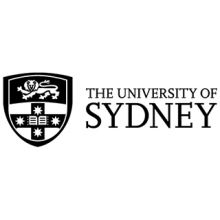Browse the full results of the World University Rankings 2021
Australia’s universities have continued scaling Times Higher Education’s World University Rankings, with about half of the sector improving on last year’s performance and another quarter holding steady. But this year could represent a high-water mark, with the biggest improvements registered by institutions that are highly dependent on international students.
The top-ranked University of Melbourne, which climbed one place to 31st in this year’s league table, said Covid-19 would have a “variable” effect on international rankings. “While the full impact…on the university and our global peer institutions is largely unknown, it is likely that falls in revenue will have an impact on research outcomes,” said vice-chancellor Duncan Maskell.
“This will make it harder to predict performance in the rankings in the future, as it will be difficult to determine whether some universities are affected more than others.”
Overall, Australia remained the fifth most successful nation, with six top-100 ranked institutions. It trailed Germany and the Netherlands, which had seven each, the UK (11) and the US (37).
Australia’s six front-runners are all members of the research-intensive Group of Eight (Go8) network. Another six ranked within the next 100 institutions globally, with Macquarie University breaking into the top 200 for the first time.
THE chief knowledge officer Phil Baty said Australia’s tally of top 200 universities had leaped from eight to 12 in half a decade, in “a clear signal of wider system strength”.
“Australia’s great performance in rankings has been driven in large part by its extraordinary global leadership in attracting international students, particularly from China,” he said. “[They] have become a vital source of income to cross-subsidise research and pay the salaries of star academics.”
But the pandemic has highlighted “just how fragile this success is”, Mr Baty noted. “The immediate reduction in international student mobility created by the pandemic could evolve into a more permanent change as students reassess their options, and perceptions of welcome and hospitality are strained by the crisis and mounting geopolitical tensions,” he said.
“I’d also predict more regional student mobility within Asia, as east Asian students in particular choose from a growing range of increasingly highly ranked local universities.”
The University of Sydney climbed from 60th to equal 51st, trading places with the Australian National University (ANU), which fell from 50th to 59th. “We continue to perform strongly and deliver leading research that is recognised globally,” said Sydney vice-chancellor Michael Spence.
Sydney’s performance was buttressed by its revenue from international students, which last year rose by 20 per cent to about A$1.06 billion (£585 million) – 40 per cent of its overall income.
Sydney’s international earnings have plummeted this year, and it now expects next year’s international intake to be 35 per cent smaller than earlier modelling had suggested – leading it to launch consultations on a possible voluntary redundancy programme.
Monash University, which rose 11 places to equal 64th – leapfrogging UNSW Sydney into fifth spot nationally, even though UNSW itself climbed four places – increased its earnings from onshore international students by 16 per cent to A$1.13 billion last year.
This represented 38 per cent of Monash’s income. UNSW’s international student earnings grew by a more sedate 8 per cent.
Another big improver was the University of Technology Sydney, which obtained 40 per cent of its income from international students last year. It rose 34 places to equal 160th, ranking ninth in Australia – and overtaking Queensland University of Technology, which derives about 21 per cent of its earnings from international students.
ANU and the University of Western Australia (UWA) were the only Go8 members to lose ground in this year’s rankings. International earnings at both were subdued even before the pandemic – ANU because of a self-imposed decision to stop growing, and UWA because of state government policies that suppressed demand from overseas students.
The University of Canberra – a relative minnow, with a budget of about A$300 million compared to the billion-dollar-plus turnovers of Go8 members – continued its ascent of the rankings, rising nine places to equal 184th in the world and 10th nationally.
The 30-year-old university was outside the world top 500 when it debuted five years ago. Vice-chancellor Paddy Nixon said rankings did not define Canberra’s success but were “a wonderful barometer for the way we are tracking internationally”.
New Zealand’s eight universities recorded mixed results in this year’s league table, with four maintaining their standings and three losing ground. The exception was the front-runner, the University of Auckland, which climbed 32 places to equal 147th thanks to big increases in its scores for citations and industry income.
Register to continue
Why register?
- Registration is free and only takes a moment
- Once registered, you can read 3 articles a month
- Sign up for our newsletter
Subscribe
Or subscribe for unlimited access to:
- Unlimited access to news, views, insights & reviews
- Digital editions
- Digital access to THE’s university and college rankings analysis
Already registered or a current subscriber? Login










